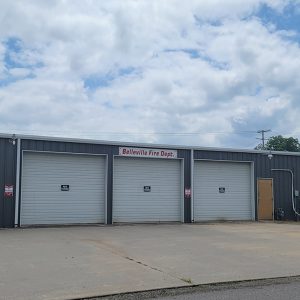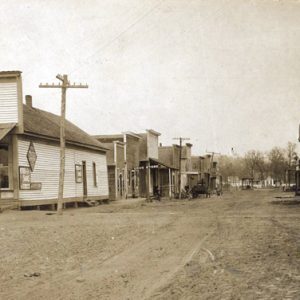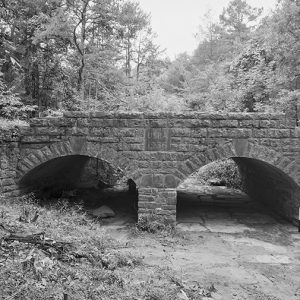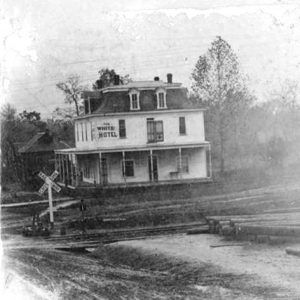calsfoundation@cals.org
Belleville (Yell County)
| Latitude and Longitude: | 33º05’35″N 093º26’55″W |
| Elevation: | 364 feet |
| Area: | 1.87 square miles (2020 Census) |
| Population: | 312 (2020 Census) |
| Incorporation Date: | April 25, 1899 |
Historical Population as per the U.S. Census:
|
1810 |
1820 |
1830 |
1840 |
1850 |
1860 |
1870 |
1880 |
1890 |
1900 |
|
– |
– |
– |
– |
– |
– |
– |
– |
247 |
552 |
|
1910 |
1920 |
1930 |
1940 |
1950 |
1960 |
1970 |
1980 |
1990 |
2000 |
|
335 |
410 |
401 |
411 |
372 |
273 |
379 |
571 |
390 |
371 |
|
2010 |
|
|
|
|
|
|
|
|
|
|
441 |
|
|
|
|
|
|
|
|
Located on State Highway 10 four miles northwest of Danville (Yell County), the second-class city of Belleville was once the second-largest city in Yell County. The city is near Spring Lake, a popular recreational site on the edge of the Ozark National Forest, and is on the highway that leads to Mount Magazine State Park.
The settlement of Monrovia (Yell County), now abandoned, existed in the area before the Civil War and was used as a temporary prison by Federal troops during the war. The first settler of what is now Belleville was William Fergeson, who established a sawmill and store in 1872 and later became the first postmaster of what then was called Fergeson Mills. The next year, a school was established by the Methodist church at a cost of $3,500. The money was contributed by three ministers: J. B. Heck, John Shoate, and S. O. Chesney. In 1878, John Choate opened a second store at Fergeson Mills. Other settlers arrived, coming from Tennessee, Pennsylvania, and South Carolina. In 1889, the community offered eight stores of general merchandise, a harness shop, a drugstore, a milliner’s shop, a wagon maker, more than one blacksmith, a stave mill, and a hotel. The Choctaw, Oklahoma, and Gulf Railroad (later acquired by the Rock Island line) built a railroad through Yell County that year, missing the city by a mile, but businesses and homes were relocated to the area of the depot in April 1899. The city was incorporated the same month. A two-story school building was constructed at the new site in 1904.
The railroad depot was named Belleville rather than Fergeson Mills, and Belleville quickly became the official name of the city and of its post office. Two contrary accounts of the origin of the name are given by local historians: some say that the city was named for its many beautiful girls (“They were the typical Southern Belles”), but others aver that the city was named for outlaw Belle Starr, who allegedly visited the area frequently.
During the twentieth century, Belleville was known principally for the timber industry and for its place on the railroad. At one time, it had several barbershops, a theater, a telephone office, two cotton gins, two hotels, a bank, sixteen general stores, two lumber yards, a grist mill, a sawmill, and a weekly newspaper. In 1959, the principal employer in the city was the George Cline timber industries, which processed pine timber for posts and for paper. The twelve-grade school system boasted of a vocational agriculture and home economics department. During the 1970s, however, the Rock Island line ceased to run trains through the city, and the timber industry declined.
The Belleville school system was consolidated with the Havana (Yell County) school system in 1985, creating the Western Yell County School District. Elementary school students of the district attend school in Belleville, while the high school students meet in Havana. In the twenty-first century, the principal employment in Belleville is in the poultry industry. Belleville is surrounded by chicken houses, cattle farms, and other large farms. The city has a volunteer fire department, and three churches—Assembly of God, Baptist, and Methodist—as well as several restaurants and business establishments built along the highway.
Belleville identifies itself as the home of Johnny Sain. Sain, a successful major league baseball player and later a pitching coach, was born in Havana, five miles to the west of Belleville; he owned a service station in Belleville, as well as land near Spring Lake, five miles north of Belleville, which offers fishing, swimming, and camping sites to the public. F. C. Jones, the grandfather of comedian and actress Carol Burnett, once owned a house and land in Belleville.
For additional information:
Banks, Wayne. History of Yell County, Arkansas. Van Buren, AR: The Press-Argus, 1959.
Trower, Kathy. “Belleville Was Home to Baseball Legend.” Arkansas Democrat-Gazette, July 30, 2006, River Valley & Ozark edition, Advertising Supplement.
Yell County Historical & Genealogical Association. Yell County Heritage. Bedford, TX: Curtis Media, Inc., 1997.
Steven Teske
Butler Center for Arkansas Studies
 Belleville
Belleville  Belleville Fire Department
Belleville Fire Department  Belleville Post Office
Belleville Post Office  Belleville School
Belleville School  Belleville Street Scene
Belleville Street Scene  Belleville Street Scene
Belleville Street Scene  Spring Lake Bridge
Spring Lake Bridge  White Hotel
White Hotel  Yell County Map
Yell County Map 



Comments
No comments on this entry yet.